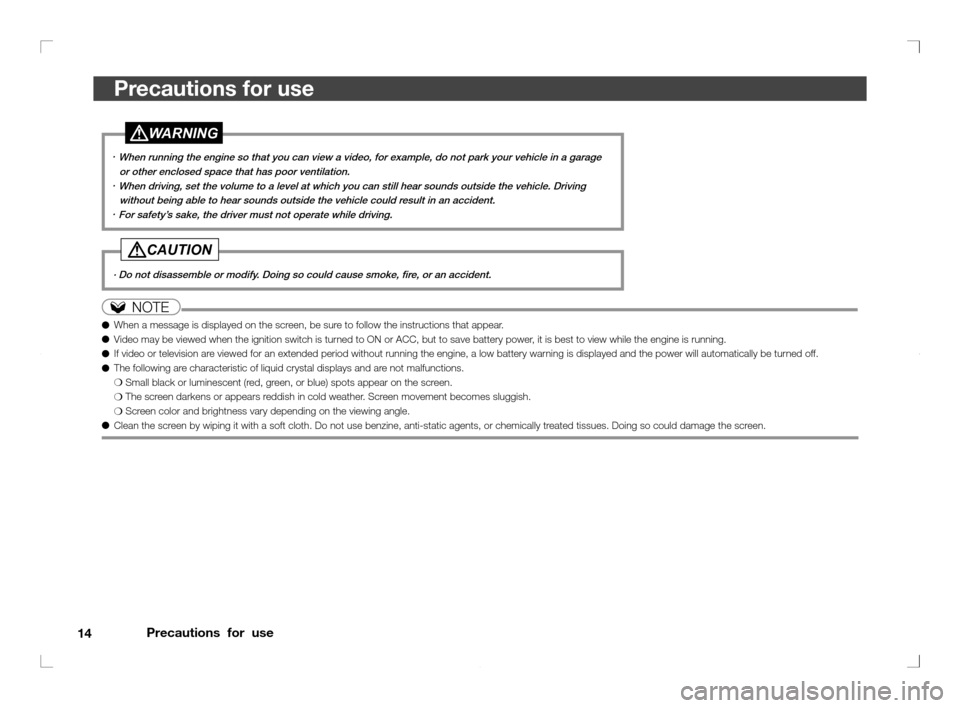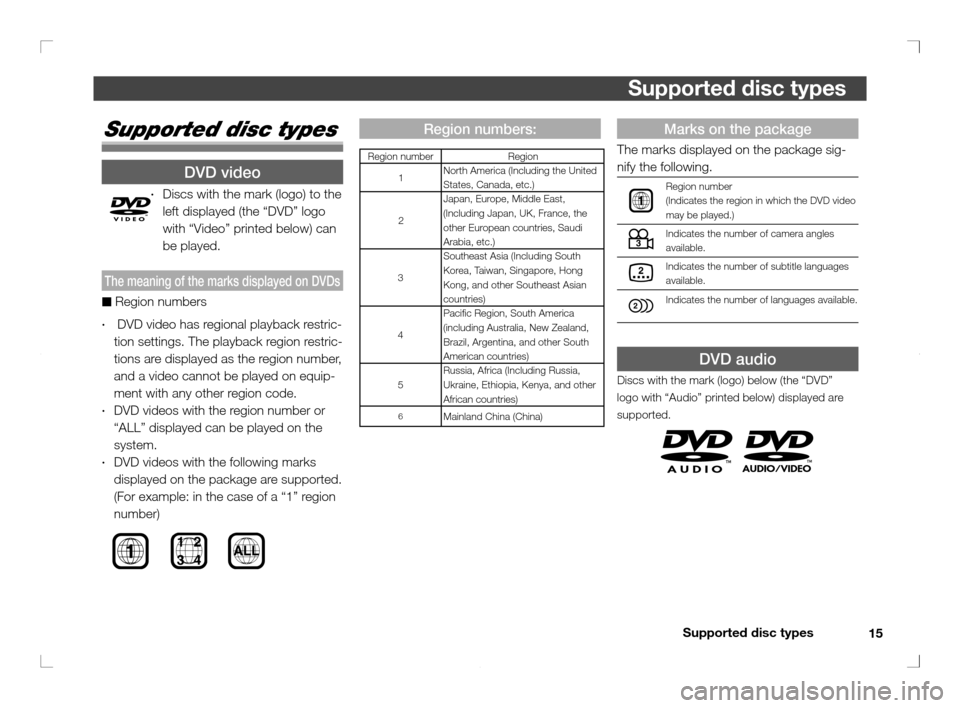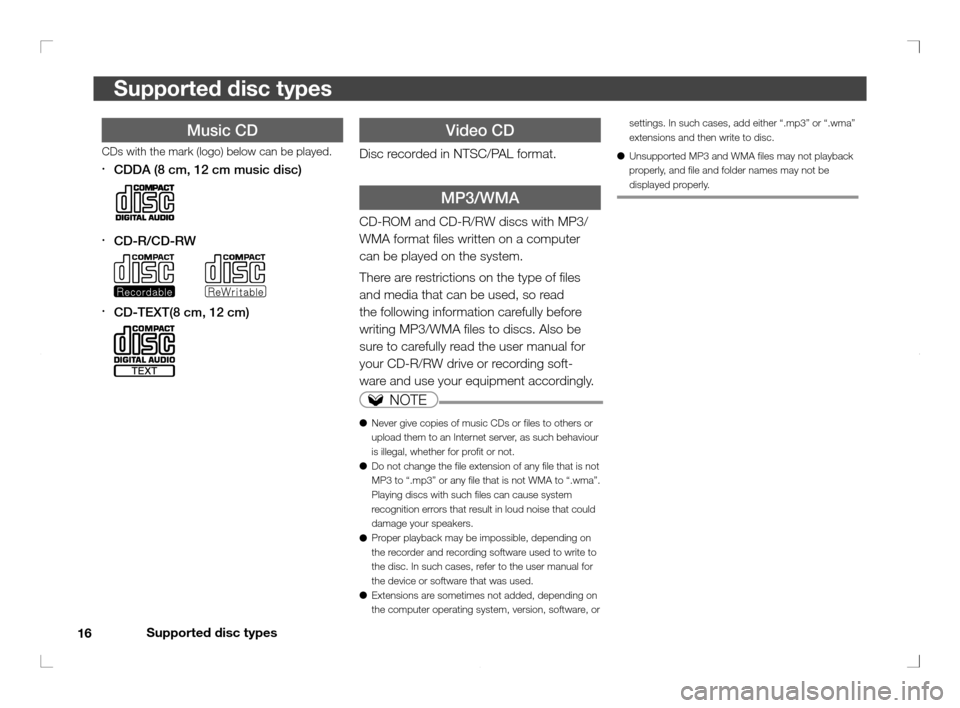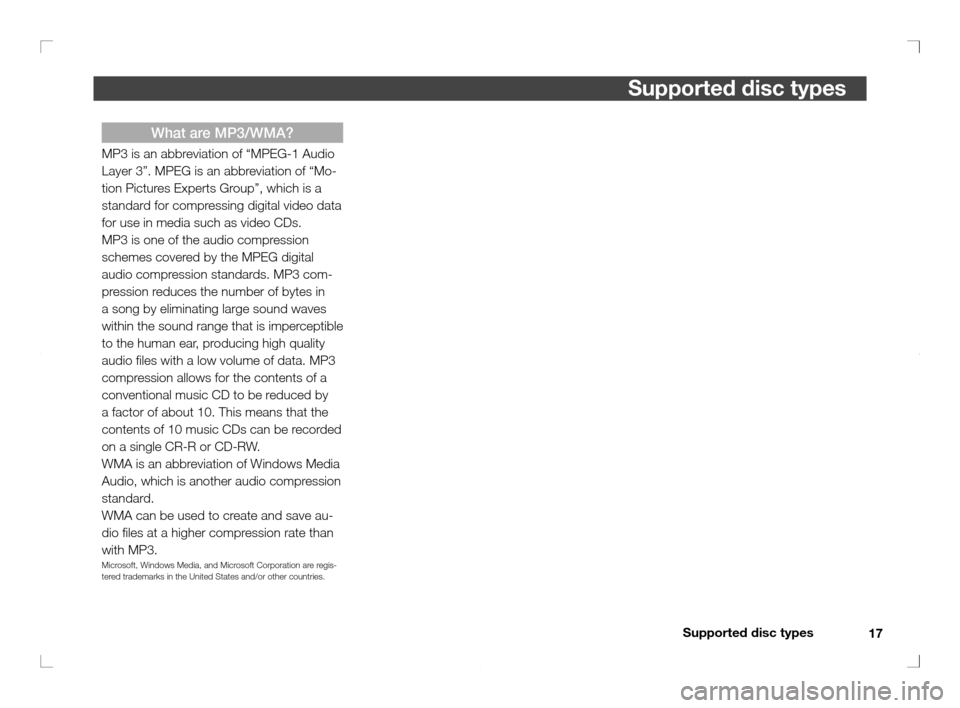Page 9 of 69

10Names and functions of parts
Names and functions of parts
Replacing the battery
Use your fi ngernail to press tab A on
the battery case at the backside of the
remote control. While pressing tab A in the
direction shown in (1), pull the battery case
out as shown in (2)
NOTE
● When disposing of the lithium battery, apply insulating
tape and dispose of the battery in accordance with
applicable local regulations.
Place a new battery in the battery case
with its positive side facing up
mb075
Nouvelle pile (borne positive)
Before using the remote control
The remote control comes with a battery
installed.
There is an insulation sheet to prevent the
battery from discharging. Remove this
insulation sheet before using the remote
control.
mb073
Insulation sheet
Operating instructions
When using the remote control to operate
the system, aim the remote control at the
remote control sensor.
mb077
Remote control sensor
NOTE
● Do not disassemble or drop the remote control, and
do not subject the remote control to any physical
shock.
● Do not place any heavy objects on top of or sit on
the remote control.
● If the remote control sensor is exposed to direct
sunlight or other strong light, it may stop functioning
properly or stop operating at all. In this situation,
block out the light.
● Store the remote control in the seatback pocket
when not in use.
��������
���
��� ��������� ����� �
�
Page 10 of 69
11 Names and functions of parts
Names and functions of parts
● Be sure to place the battery in with the correct
polarity.
● Replace the old battery with a new one of the same
type (CR2025LITHIUM).
Replace the battery case into the
remote control
mb076
Slide the battery case in
until tab A locks it in place. Ta b A
·
For safety’s sake, keep batteries out of the
reach of children.
WARNING
��������
���
��� ��������� ����� �
�
Page 11 of 69

12Names and functions of parts
Names and functions of parts
POWER button
Press to turn the wireless headphone power ON/OFF.
POWER indicator
Illuminates when the power is turned ON. (Red)
Volume
To adjust the volume.
Infrared sensor
To receive infrared signals from the system.
NOTE
● When the wireless headphones are ON but there is no audio or the audio signal
cannot be received for more than three minutes, the wireless headphones
automatically go OFF.
● The wireless headphones can only receive audio signals in the rear seats (second
and third row seats).
·
For safety’s sake, the driver must not use the
wireless headphones while driving. Doing so
could prevent the driver from hearing sounds
outside the vehicle and result in an accident.
·
Adjust the wireless headphones volume to a
comfortable level. Listening at high volume for an
extended period may damage your hearing.
·
Take off the wireless headphones and turn them
off when not in use.
CAUTION
Names and functions of wireless headphone parts
R
VolumeHigh
Low
mb029R side
(right)
��������
���
��� ��������� ����� �
�
Page 12 of 69
13 Names and functions of parts
Names and functions of parts
Replacing the wireless headphone batteries
Take the following steps to replace the wireless headphone
batteries.
Use a coin to turn the screw, then remove the screw, battery
cover, and the old battery.
Place two AAA batteries in the battery compartment,
checking for correct polarity, as shown in the fi gure.
Replace the battery cover.
Replace the screw.
NOTE
● When not using the headphones for an extended period, remove the batteries from
the wireless headphones.
��������
���
��� ��������� ����� �
�
Page 13 of 69

14Names and functions of parts
Names and functions of partsPrecautions for use
Precautions for use
·
When running the engine so that you can view a video, for example, do not park your vehicle in a garage
or other enclosed space that has poor ventilation.
·
When driving, set the volume to a level at which you can still hear sounds outside the vehicle. Driving
without being able to hear sounds outside the vehicle could result in an accident.
·
For safety’s sake, the driver must not operate while driving.
WARNING
· Do not disassemble or modify. Doing so could cause smoke, fi re, or an accident.
CAUTION
NOTE
● When a message is displayed on the screen, be sure to follow the instructions that appear.
● Video may be viewed when the ignition switch is turned to ON or ACC, but to save battery power, it is best to view while the engine is running.
● If video or television are viewed for an extended period without running the engine, a low battery warning is displayed and the power will automatically be turned off.
● The following are characteristic of liquid crystal displays and are not malfunctions.
�P Small black or luminescent (red, green, or blue) spots appear on the screen.
�P The screen darkens or appears reddish in cold weather. Screen movement becomes sluggish.
�P Screen color and brightness vary depending on the viewing angle.
● Clean the screen by wiping it with a soft cloth. Do not use benzine, anti-static agents, or chemically treated tissues. Doing so could damage the screen.
��������
���
��� ��������� ����� �
�
Page 14 of 69

Supported disc types
15
Supported disc types
Supported disc types
DVD video
· Discs with the mark (logo) to the
left displayed (the “DVD” logo
with “Video” printed below) can
be played.
The meaning of the marks displayed on DVDs
■ Region numbers
· DVD video has regional playback restric-
tion settings. The playback region restric-
tions are displayed as the region number,
and a video cannot be played on equip-
ment with any other region code.
· DVD videos with the region number or
“ALL” displayed can be played on the
system.
· DVD videos with the following marks
displayed on the package are supported.
(For example: in the case of a “1” region
number)
Marks on the package
The marks displayed on the package sig-
nify the following.
Region number
(Indicates the region in which the DVD video
may be played.)
Indicates the number of camera angles
available.
Indicates the number of subtitle languages
available.
Indicates the number of languages available.
DVD audio
Discs with the mark (logo) below (the “DVD”
logo with “Audio” printed below) displayed are
supported.
Region numbers:
Region numberRegion
1North America (Including the United
States, Canada, etc.)
2Japan, Europe, Middle East,
(Including Japan, UK, France, the
other European countries, Saudi
Arabia, etc.)
3Southeast Asia (Including South
Korea, Taiwan, Singapore, Hong
Kong, and other Southeast Asian
countries)
4Paci� c Region, South America
(including Australia, New Zealand,
Brazil, Argentina, and other South
American countries)
5Russia, Africa (Including Russia,
Ukraine, Ethiopia, Kenya, and other
African countries)
6Mainland China (China)
��������
���
��� ��������� ����� �
�
Page 15 of 69

Supported disc types
16
Supported disc types
settings. In such cases, add either “.mp3” or “.wma”
extensions and then write to disc.
● Unsupported MP3 and WMA � les may not playback
properly, and � le and folder names may not be
displayed properly.Music CD
CDs with the mark (logo) below can be played.
·
CDDA (8 cm, 12 cm music disc)
·
CD-R/CD-RW
·
CD-TEXT(8 cm, 12 cm)
Video CD
Disc recorded in NTSC/PAL format.
MP3/WMA
CD-ROM and CD-R/RW discs with MP3/
WMA format � les written on a computer
can be played on the system.
There are restrictions on the type of � les
and media that can be used, so read
the following information carefully before
writing MP3/WMA � les to discs. Also be
sure to carefully read the user manual for
your CD-R/RW drive or recording soft-
ware and use your equipment accordingly.
NOTE
● Never give copies of music CDs or � les to others or
upload them to an Internet server, as such behaviour
is illegal, whether for pro� t or not.
● Do not change the � le extension of any � le that is not
MP3 to “.mp3” or any � le that is not WMA to “.wma”.
Playing discs with such � les can cause system
recognition errors that result in loud noise that could
damage your speakers.
● Proper playback may be impossible, depending on
the recorder and recording software used to write to
the disc. In such cases, refer to the user manual for
the device or software that was used.
● Extensions are sometimes not added, depending on
the computer operating system, version, software, or
��������
���
��� ��������� ����� �
�
Page 16 of 69

Supported disc types
17
Supported disc types
What are MP3/WMA?
MP3 is an abbreviation of “MPEG-1 Audio
Layer 3”. MPEG is an abbreviation of “Mo-
tion Pictures Experts Group”, which is a
standard for compressing digital video data
for use in media such as video CDs.
MP3 is one of the audio compression
schemes covered by the MPEG digital
audio compression standards. MP3 com-
pression reduces the number of bytes in
a song by eliminating large sound waves
within the sound range that is imperceptible
to the human ear, producing high quality
audio � les with a low volume of data. MP3
compression allows for the contents of a
conventional music CD to be reduced by
a factor of about 10. This means that the
contents of 10 music CDs can be recorded
on a single CR-R or CD-RW.
WMA is an abbreviation of Windows Media
Audio, which is another audio compression
standard.
WMA can be used to create and save au-
dio � les at a higher compression rate than
with MP3.
Microsoft, Windows Media, and Microsoft Corporation are regis-
tered trademarks in the United States and/or other countries.
��������
���
��� ��������� ����� �
�